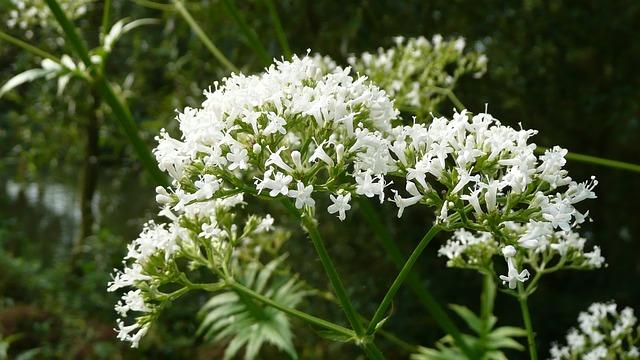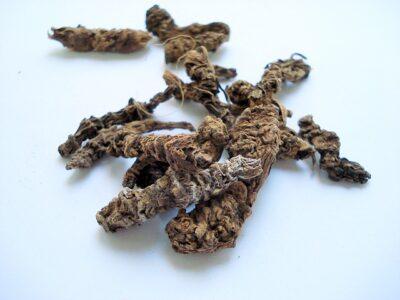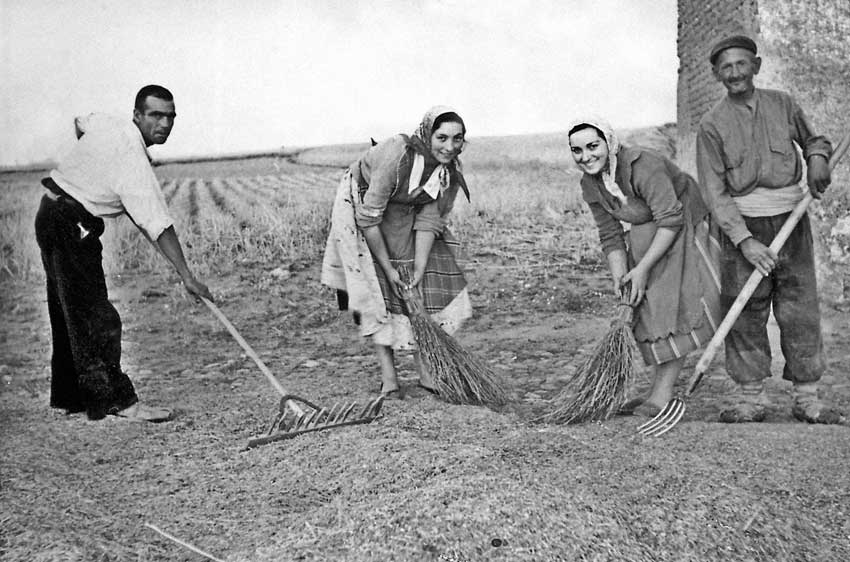
Although valerian root is usually grown outdoors as part of an herb or flower garden, it is not too difficult to grow it indoors, as well. If you do have outdoor space, it is even possible to start the plant outside, and then transplant it into pots at the beginning of winter to bring inside. Valerian that is left outdoors and not cultivated for its roots will return in the spring. Valerian also reproduces runners that can be harvested or transplanted into indoor pots.
What Is Valerian Root and What Are its Benefits?
Valerian is a perennial plant that grows up to two feet tall. It has sweet-smelling, light purple, white or pink little flowers that bloom during late spring and early summer. The flowers of the plant are a common ingredient in many perfumes and can be harvested for potpourri.
The root of the plant is used medicinally and is hard-pressed into juice or is dried to create a powder. The root is light, grayish-brown in color and doesn’t have too much odor when fresh. Once dried, it has an overpowering smell that is displeasing to many people.
Although the smell may not be pleasant, valerian root is valued for its many medicinal and culinary uses. It has been used to ease nervousness, anxiety, restlessness and insomnia since the second century A.D. Scientists are not sure exactly how valerian works, but believe that it operates in much of the same way as Xanax or Valium, which increases the amount of a chemical called gamma-aminobutyric acid (GABA) in the brain. This chemical aids in the regulation of nerve cells and produces a calming effect.
Fast, All-Natural Pain Relief With No Nasty Side Effects!
Valerian is a popular alternative to prescription medications for sleep and anxiety problems because it is considered to be both safe and gentle. The United States Food and Drug Administration lists valerian as “generally recognized as safe” (GRAS), while Germany’s Commission E has approved valerian root as an effective mild sedative.
How to Grow Valerian Indoors
We have the choice of growing and harvesting enough of the root during the spring, summer and fall to last through the winter months, or we can grow it indoors as well, to harvest as needed.
Step 1

Use pre-moisturized potting mix to fill a seed tray. The easiest way to moisten a dry mix is to pour it into a bucket and add warm water until the soil is moist. You do not want it to be dripping, however. Too much wetness will prevent the seeds from germinating.
Step 2
Find high-quality valerian seeds that are fresh. Valerian seeds can be pernickety, so it is important to get this step right. You want to sprinkle the small seeds onto the top of the pre-moistened potting mix, and then press them lightly into the soil. Do not cover them, because they need sunlight to germinate.
Step 3
Use a spray bottle to lightly mist water over the top of the seeds. Cover the tray with clear plastic wrap and place it in a warm and sunny area. Don’t put the seeds directly on a windowsill, however, as the window might magnify the sun’s rays and burn the seeds. Remember that valerian seeds are finicky!
Step 4
Check the potting soil regularly and use your spray bottle when needed to keep the seeds and soil moist. Moist, but not over-saturated! The environment inside of the plastic should be warm and humid for the seeds to germinate.
Step 5
When the seeds emerge from the soil, loosen the plastic wrap. When the seeds grow to 1-2 inches tall, remove the plastic wrap entirely. You will want to replant the healthiest seedlings into new containers that are 3-4 inches in height. Now you can put these seedlings on a sunny windowsill; just keep an eye out for over drying. If you don’t have too many sunny areas inside of your home, you will have to use artificial sunlight such as a grow light.
Step 6
Keep re-potting the valerian plants as they grow into larger containers. Make sure the containers all have a good drainage system. The bottom of the plant should never be allowed to sit in water. Remember that these plants can grow to 5-6 feet tall, so make sure that you have containers large enough to support a plant of this size.
How to Harvest Valerian Root
- Cut the blooms of the plant to use as flower bouquets or as potpourri.
- It is best to harvest mature root systems after the plant has had time to grow to full size. However, valerian also produces runners that can be harvested to leave the original plant in place. You can also harvest the original plant and let the smaller ones re-grow. Many herbalists say the root is the most potent on the mature plants.
- Dig deep enough so that you get the entire root system out of the soil. Rinse the roots off with water.
- Cut the roots up into small pieces with sharp shears. Soak the pieces in a bowl.
- After they are thoroughly soaked, remove them from the water and sprinkle them on a drying rack. Place the cuttings in a dry and cool place, and let them dry out for at least a month. You will notice the scent of the roots become more pungent as they dry.
- You also can dry out the leaves of the plant to make teas.
You now have a dried valerian root herb! You can simmer the roots and leaves as a tea or use them in food. You can mix the root or leaves with other dried herbs. You also can make your own capsules to take before bed to help you sleep.
Guess what? Cats love dried valerian almost as much as catnip! You now have a healthy, homegrown treat for kitty, as well.
Have you ever grown or used valerian root? Share your tips for how to grow and use it in the section below:









